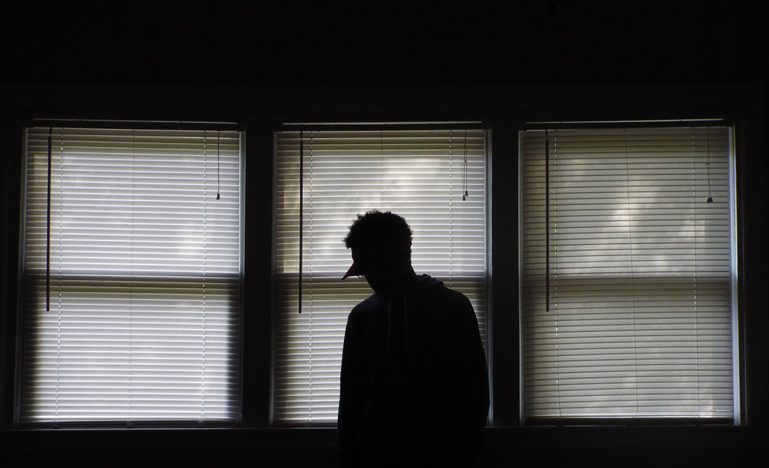The law of journalist-source privilege is still taking shape
What can we make of last month’s effort by the Supreme Court of Canada to clarify when and how police can seize materials from journalists?

What can we make of last month’s effort by the Supreme Court of Canada to clarify when and how police can seize materials from journalists? The ruling in R. v Vice Media Canada was notable in that it appears to have set the table for future decisions on journalist-source privilege. What’s more, courts moving forward will have to take into account a new federal law that offers journalists greater legal protections than what we have seen in the past.
Tweaking the old standard
Twenty-seven years ago, the Supreme Court handed down a landmark case, in CBC v Lessard, that promised to redefine the relationship between the media and the courts.
The CBC had caught, on tape, a small mob damaging a Canada Post office. The police, having seen the footage broadcast and with no other means of obtaining the evidence, filed for a warrant to seize the tapes.
The legal fight that ensued was predictable. The CBC argued that the government had no right to seize their tapes, that doing so would compromise the independence of the media. The Attorney General contended that evidence is evidence, regardless of who’s holding it.
The top court ultimately ordered the CBC to hand over the tapes. But there was complexity in its reasoning.
Justice Gérard La Forest, in his concurring reasons, recognized “the press should not be turned into an investigative arm of the police.” Even so, a reporter’s personal notes should be available by way of a court order “when it is clear that all reasonable alternative sources have been exhausted.”
Justice Claire L'Heureux-Dubé took an even dimmer view of the role of the press. “Important as the constitutional protection of the freedom of the press is, it does not go as far as guaranteeing the press special privileges which ordinary citizens, also innocent third parties, would not enjoy in a search for evidence of a crime,” she wrote.
But it was Justice Peter Cory who drew up a nine-part balancing test. In short, any search warrant issued against the media must: meet the requirements in the Criminal Code; recognize the unique role the media plays in a democratic society; list alternate sources for the information and any steps taken to obtain the information from those sources. The court must also ask whether the material already been substantially published. Also, can the information be obtained in a way that will do little harm to the operations of the press now and in the future?
It was hardly a win for those advocating for a broader class protection for journalists. When the test has been used, journalists have often found themselves on the losing end.
When the RCMP filed to obtain a reporter’s tapes of an interview with a man accused of sexual assault in 2003, the B.C. Supreme Court found the benefit of the tapes overcame any potential chilling effect.
In 2006, the Supreme Court of Newfoundland and Labrador held that a search warrant seeking to obtain CBC tapes chronicling a union’s preparations for a strike, for the most part, met the Lessard test. It quashed the search warrant only because police failed to provide information to the CBC and the court in a more timely fashion.
Most notably, in 2010, in R. v National Post, the Supreme Court of Canada revisited Lessard and, though it would refuse again to recognize a class privilege protecting journalists, it set up criteria to assess a journalist’s claim for protection of secret sources on a case-by-case basis.
A Vice model
Last month, the Supreme Court of Canada was offered another opportunity to redefine the parameters of press freedom in R. v Vice Media Canada. It upheld, unanimously, an order for Ben Makuch, a Vice reporter, to give police copies of conversations with a Canadian accused of terrorism-related offences and who was living in the self-proclaimed caliphate of the Islamic State. The RCMP sought to obtain those messages, in which the accused made threats to attack Canada.
But the court split 5-4 on its reasons, and in doing so brought some refinement to the Lessard framework.
The majority found that prior publication of the sought-after material ought to always tilt in favour of granting the production or search order. But they also found reason to put limits on the government’s ability to obtain such orders on an ex parte basis. The new standard would permit the affected media organization to file for a review of the ex parte order, if it can provide relevant information that could reasonably change such an order.
The minority went further in recognizing a distinct status of the press. “Strong constitutional safeguards against state intrusion are a necessary precondition for the press to perform its essential democratic role effectively,” Justice Rosalie Abella wrote. Section 2(b) of the Charter recognizes as much, and that the constitutional implications require a “rigorously protective harmonized analysis.”
The distinction made little difference for Vice and Ben Makuch. But it did lead Abella to note that journalists’ work product — “personal notes, recordings of interviews, or source contact lists” —enjoys a high level of protection from law enforcement. “It seems inescapable that it usually does,” she writes. The same goes for the distinction of “off the record” or “not for attribution” information.
Abella and the minority called for an approach in which journalists’ “right to be secure against unreasonable search and seizure as well as its right to be protected from undue interference with legitimate newsgathering activities, are explicitly taken into account.”
A whole new act
For advocates of new journalistic protections, the Vice Media ruling was tantalizingly close, but a win is still just out of reach.
If anything, the new standard from the majority mostly entrenches a test that has been used consistently to order the production of information in journalists’ possession. The one that would beef up journalistic protections was ultimately relegated to the minority court’s opinion.
Justin Safayeni, a litigator with Stockwoods who represented a media coalition intervening in the case, underscored the conflicting messages.
“The decision goes some ways towards fixing the procedural deck that was stacked against the media in these types of cases,” he tweeted after the decision was released. But he called the ruling, overall, “a mixed bag in terms of protecting press freedom.”
The court recognized the chilling effect such orders could have on the media, and he notes “this language is potentially helpful for future cases involving confidential sources or unpublished material.” But it ultimately declined to recognize the chilling effect in the Vice Media decision — even though the information being sought by the RCMP was of relatively low value.
Lisa Silver wrote on the University of Calgary law blog that most of the revision “seems more of an oil change and lube: something to make the engine work better.”
It’s the changes to the ex parte applications that have generally been highlighted as the hallmark of the ruling. Safayeni calls it “a big deal.”
By giving media outlets a chance to argue before a judge that the original ex parte application was approved in error, it throws the whole process for a loop. “By permitting a more contextual permissive approach, Moldaver opens the door to a moveable feast of standards for review that is [sic] appears tailor-made to the situation or facts,” Silver writes. She notes that, until this new scheme, a judge will have the discretion to review the validity of the original order — not just look at the judge's reasons. It's discretion over deference.
That is the big difference for now. But it’s in the minority opinion where there may be a hint of a change of direction in the making. They “may signal a shift,” Safayeni wrote. “And the difference isn't simply academic.”
A two-part Charter defence for journalists fighting state production orders, if ever recognized, could have huge effects.
The minority court will likely play a large role in future rulings, according to Aileen Furey of McInnes Cooper. “The reasons of the majority of the court’s judges, combined with the strongly-worded reasons of the minority of the court’s judges, leaves the door wide open to recognizing distinct protection for the media, in a case with the appropriate facts and the benefit of full legal argument on the issue, in the future,” she wrote.
Ricki-Lee Gerbrandt, an associate with Lawson Lundell, wrote after the decision that we may not have to wait long for such a ruling.
She points to Marie-Maude Denis v Marc-Yvan Côté, the case in which two Radio-Canada reporters were ordered to take the stand over their reporting into systemic corruption in Quebec, based on information obtained from anonymous sources. The Supreme Court granted leave to hear the appeal last August.
It will also be the first chance the court gets to take a closer look at the Journalistic Sources Protection Act, which came into force last year and tilts the balance in favour of protections for the media on source confidentiality. The Supreme Court declined to consider its impact in the Vice Media ruling as the events took place before the new law came into force.
Gerbrandt notes that the Supreme Court’s silence on the new Act makes the stakes for the upcoming hearings all the more interesting.


